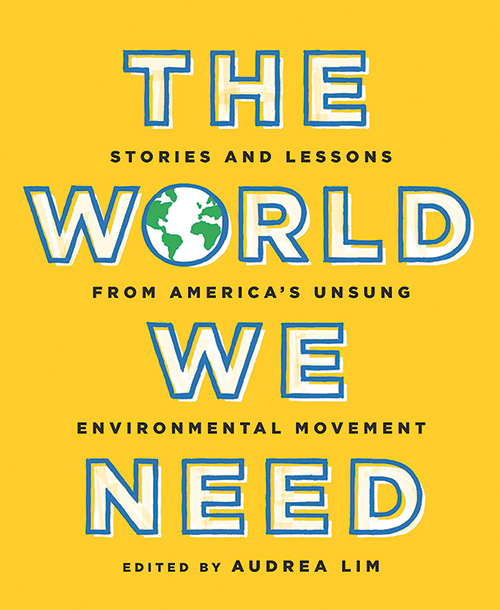
The World We Need: Stories and Lessons from America’s Unsung Environmental Movement
Reviewed by Pamela Haines
February 1, 2022
Edited by Audrea Lim. The New Press, 2021. 352 pages. $19.99/paperback or eBook.
This collection of stories about local citizen groups across the country taking on environmental battles in their own backyards illuminates a critical—and often unrecognized—segment of our nation’s environmental movement.
The individual stories are heartening, and the scope of the coverage is breathtaking, offering a tour of places and people in our country that are invisible to most of us. There are stories of communities fighting toxic chemicals, building grassroots power, growing clean and sustainable industries, mobilizing culture, restoring the land, and strengthening democracy. We hear from people in the Deep South, Appalachia, the rural Southwest, big cities spanning the country, Hawaii, Puerto Rico, and many points in between. The voices include those of rural Black people; White mountain people; immigrants from Portugal, Laos, China, and Central America; and Indigenous people from the Midwest, the West, and the Far North. There are young people and elders, scrappy outsiders, and patient insiders: all tenacious, all holding to a vision of a world that works for ordinary folks.
Just absorbing an overall sense of the vitality and diversity of community-based environmental struggles across the country would be worth the read, but there’s more. Several of the contributors reference the People of Color Environmental Leadership Summit as a key root of their activism. This group was first convened in 1991 by the United Church of Christ (UCC), drawing over 1,000 delegates from all 50 states, and developing 17 principles of environmental justice that continue to guide that movement. I give thanks to the UCC for their vision.
We get to listen in as people of all identities and backgrounds talk about wanting to make their homes places where their children and grandchildren will want to stay. A woman from Appalachia speaks of the Green New Deal’s gift to ordinary people of the opportunity to dream and imagine new things. A man from Detroit, Mich., explains that his major goal isn’t environmental justice but self-determination. If we’re self-determined, he says (referencing the Native conversation around sovereignty), we won’t have people polluting and exploiting us. A couple of farmers from the small Puerto Rican island of Vieques name the first sovereignty as food. Although acknowledging the importance of energy and political sovereignty, they say, “If we are free to feed ourselves, we can aspire to free Puerto Rico as well.”
I found the chapter on the Community Environmental Legal Defense Fund (CELDF) the most challenging and stimulating. In the process of supporting many communities across the country to protect themselves against unwelcome corporate incursions, they have learned the hard way that the law is on the side of neither communities nor nature nor solutions to the climate crisis. Rather, it legalizes the status quo, including the control corporations wield over people, land, and the economy. The natural world is treated as private property to be dominated and exploited, while property itself—the corporation—gets legal protection. If your community’s resistance speaks of “cultural heritage, democratic authority, or a human right to water,” they say, “the system returns an error message.”
Thus, CELDF-supported municipal laws pursue system change to elevate civil, human, democratic, and ecosystem rights above corporate power. It’s an uphill battle. Their hard-fought Lake Erie Bill of Rights was in effect for only a year before it was struck down, yet in the process thousands of people were mobilized, local politics was altered, and others were inspired to take up the fight. They claim it as a nontraditional win.
These challenges to democracy are echoed in a grassroots Oneida effort to fight not only the specter of a plastics-burning incinerator but the collusion of their own tribal business committee. Additionally, a citizen effort in Texas that succeeded in legislating their town as fracking free was shot down by a subsequent statewide preemption law. Yet the movement for democracy and environmental justice shows no signs of slowing down. Underlying all these efforts is an unspoken assumption that the arc of the universe bends toward justice.
This book is not only eye-opening and hopeful, it is beautiful and well-designed, with artwork and photographs as part of the text. It would be a strong addition to any Friends school curriculum, meeting library, or individual collection.
Pamela Haines is a member of Central Philadelphia (Pa.) Meeting. She is the author of Money and Soul, an expansion of a Pendle Hill pamphlet by the same name. Her newest titles are That Clear and Certain Sound and a volume of poetry, Alive in This World.


